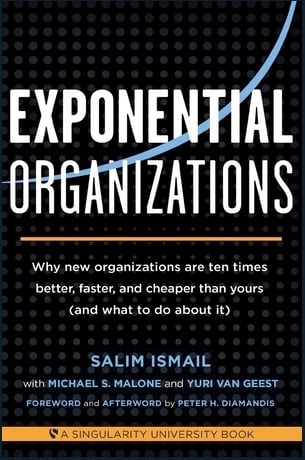Ever feel like you're juggling a circus of moving parts? Does it seem like your business faces challenges at every turn?
As the world speeds up, many organisations struggle to keep pace. Yet, even the toughest problems can be solved with simple solutions.
Created by Jeff and JJ Sutherland, the Scrum Framework boosts performance through adaptability, accountability, communication, and productivity.
But how do you introduce new frameworks to an overwhelmed and possibly reluctant team? And can your team become more efficient and productive when you give them meaningful work?
In this exclusive interview, gain insights from “Scrum: The Art of Doing Twice the Work in Half the Time” co-author JJ Sutherland and find answers to your biggest productivity questions.
Watch the full interview and get candid with “Scrum” co-author JJ Sutherland here.
Insight: Even with industry shakeups, the Scrum Framework enhances resilience, productivity, and team happiness across various sectors.
Data: Scrum-powered teams deliver a remarkable 250% improvement in quality. (Tech Report)
What’s the step change: Embrace changes and demographic shifts with Scrum tactics to ensure your team produces meaningful work.
How Do You Run Scrum with Teams?

Although the Scrum Framework traces its roots to software development, it has since transcended various fields and industries.
If you’ve had enough of buzzwords like “agile” and “lean”, think of it this way instead. The goal is simple — to deliver value with speed.
| Scrum is a project management method for delivering high-value products quickly. It involves getting rapid feedback from customers, which keeps businesses on track. This creates a cycle of checking and adapting, ensuring the product is valuable to customers while saving resources for businesses. |
To get this done, you need to set up the following foundations:
| Key Roles | Key Documents | Key Phases |
|
Product Owner: The visionary who outlines the product's main features. |
Product Backlog: A list of all tasks needed, prioritised and updated regularly. |
Sprint Planning: The team plans the sprint with input from the product owner and scrum master.
|
11 Team Problems You Can Solve With Scrum
If your team struggles with productivity and delivering quality work, here are reasons why Scrum could be the lever you need to get things back on track.
1. Scrum Is the Ultimate De-Risking Tool
As the world moves in record speed, you can’t afford to play the guessing game with customers and teams.
Scrum is designed to get customer feedback, fast — helping you build a solid plan with a clear vision. This way, you can test your assumptions immediately and switch strategies if needed.
This reduces risks and removes costs by allowing you to adjust plans based on timely feedback, ensuring you stay aligned with customer needs.
2. There’s a Productivity Crisis Plaguing Developed Economies
Lack of prioritisation, confusing busywork with productivity, rigid structures, and the inability to shift workplace culture create a breeding ground for the productivity crisis.
Scrum allows for ruthless prioritisation, making work transparent. This helps identify potential leaders, reduces anxiety and confusion, and puts teams in a place where they can get things done efficiently.
3. You Can’t Force a Full Onsite Set Up Anymore
Many employees now prefer remote or hybrid setups, so acknowledging this shift is key to engaging teams.
Scrum is adaptable to all work environments — making face-to-face, online, and hybrid organisations stay on track.
While face-to-face brings a unique energy, efficiency and team cohesion that can’t be replicated online, Scrum's adaptability makes this transition more seamless. Strive for a balance between the convenience of online and the dynamic of in-person collaboration.
4. Workplaces are Struggling with Agile Fatigue
When done right, organisational agility is a powerful game changer. But vague buzzwords can frustrate teams. The real issue is execution, as “agility” can mean different things to different people.
Leaders need to make “agility” concrete. Scrum delivers structured guidance and a common language, providing practical, actionable steps, instead of just more buzzwords.
5. It’s Easy to Get Trapped in the Illusion of Control
In an uncertain world, clinging to the illusion of control is a wild goose chase.
Great leaders don’t sweat this illusion. Instead, keep your eyes on what your team is actually doing. Scrum cuts through the noise by offering a clear vision and guiding teams to focus on what really matters. This means teams can ditch the endless how-to debates and concentrate on getting real results.
6. You Need the Right Metrics to Succeed
Nothing gets a team going like a scoreboard and Scrum defines must-have metrics to keep teams on track.
First up is “speed to awareness”, a concept from Jeff Johnson, former CTO of the FBI. It measures how quickly everyone in your organisation gets the same info.
Next are “speed to decision-making” and “speed to execution”, inspired by John Deere.
By getting these right, you refund your teams’ ability to make smart decisions and act on customer needs.
7. It's Easy To Fumble AI in the Workplace
AI has the potential to speed up work and do things well.
Scrum’s approach to AI is called “Human-Machine Teaming”. This means treating AI like a valuable team member that helps people achieve great results faster and more easily.
To fully harness AI's potential without using it as a shorthand for real human talent, you must prioritise rapid integration, transparency, and strong adaptability.
8. You Deserve a Creative Workplace
Scrum isn’t just about getting things done quickly. It’s a tool for freeing people up to focus on more meaningful work.
By removing unnecessary tasks, you make space for creativity and innovation. This allows your team to collaborate with motivation and inspiration, bringing their best ideas to the table.
9. You’re Not the Only Person with Great Ideas
Scrum’s 10th Anniversary edition keeps breaking new ground in productivity and team efficiency.
One key highlight is the value of diverse perspectives, backgrounds, and voices in building stronger teams.
Cutting costs and setting rules isn’t enough. To be truly agile, you need to be transparent — sometimes that means communicating ten times more than you think necessary.
These principles make Scrum-powered organisations more collaborative and creative, driving innovation and teamwork.
10. Teams Need to Build Commitment
The essence of Scrum is to create an efficient feedback cycle, so it's crucial to play the long-game right off the bat.
Plans might change and teams might get frustrated, but commitment pays off —and it usually takes six to seven sprints, or about two to three months. Start by following the framework as is before making any tweaks. This helps teams build the right habits that will support any project moving forward.
11. There’s No Substitute for Fulfilment and Purpose
Different generations have different expectations, and leaders need to step up their game to attract and keep top talent.
Besides the paycheck — people want work to be engaging, meaningful, and impactful.
Scrum is your secret weapon for truly connecting with your team. It ensures they find real satisfaction in their roles by creating an environment where they feel valued and motivated.
With Scrum, you get to build an energetic and proactive workplace — focused on prioritisation, clear communication, and getting things “done” right.
Tying It Together
Despite industry disruptions and shifting trends, the Scrum Framework remains a go-to for enhancing resilience, productivity, and motivation in organisations.
By embracing Scrum principles — like ruthless prioritisation, keeping communication constant, and zeroing in on outcomes — you and your team can achieve top-notch performance. These tactics help you navigate challenges smoothly, ensuring you stay on track and excel even in the face of change.
Get Your Teams On The Same Page Today

As a treat, get your very own copy of our guide to Crafting Consensus-Oriented Solutions for you and your team today.














